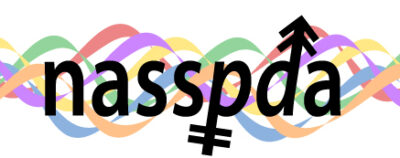Judging Criteria For Nontraditional Couples
Posted: January 6, 2022
By: Lee Fox
Now that ballroom dance competitions in the U.S. have evolved to allow nontraditional couples to participate in competitions by placing them onto the same floor as the traditional male-female couples, the judges are faced with a totally new set of dancers competing against each other. Piece of cake, right? Not really? But then again, yes, it is.
Let’s examine the criteria most judges use when watching the dancing skills of the dancers. I asked several officials I know who have judged same sex competitions throughout the world what their thoughts are. Of the qualities they mentioned, none of them rely on a particular role being danced by a particular gender…
Timing/Rhythm – Partnership/Connection – Characteristics of the Dance – Footwork – Floorcraft – Technique – Musicality – Costuming – Framework – Action/Reaction – Quality of Movement – Topline/Posture
Here are some of their comments:
“What I look for in gender neutral competing partnerships is not really different than traditional partnerships. The character of each dance should be clear to me.” – Dana Edwards
“Quality dancing is quality dancing regardless of gender. Technique is technique. A judge should not see age, color, ethnicity or gender…just who is the best dancer on the floor.” – Wendy Johnson
“What I think should be made crystal clear to judges judging same sex couples for the first time is that it’s no different. See through the costume to the dancing.” – Beth Knoll
Some judges feel there is no way to compare same sex couples to opposite sex couples objectively because they are different. Watching a female lead or a male follow does not compare to the traditional male lead and female follow. However, it’s not as if this doesn’t happen already among traditional couples.
“Of course, it’ll be a bit like comparing ‘apples to oranges’, but not as much as ‘Champion of Champions’, ‘Grand Slams’, or ‘Best of the Best’ where the winners of the different styles are positioned against each other. I think that the bottom line in this conundrum is the judging criteria ‘characterization of the dance’, which is basically the final decision maker for judges, when all other criteria are equally level in comparison.” – Benjamin Soencksen
Some judges are having difficulty wrapping their brains around the concept of men dancing with men and women dancing with women to begin with. This could be the result of bias (real or perceived) instilled in them from an early age in a world where couples are traditionally one male and one female with little to no exposure to other configurations of a couple.
The BDC (British Dance Council) now has “well-drafted online training that informs/alerts adjudicators to different unconscious bias that could affect a judge’s decision during a dance competition and that could lead them to discriminate. Age, size, gender, perceived sexuality were some of the concepts mentioned that could influence but should be overlooked when judging dancing.” – Sergio Brilhante
“Judges should be gently reminded that while we may be born with reproductive organs that dictate our biological gender, our notion of what this means and how gender is expressed is determined to a great part by culture. In the 17th and 18th centuries men wore stockings, wigs and make up. Self-evaluation is critical because judging and prejudice are on the same team. As partner dancers, we know that our beautiful dance form requires a special level of cooperation. While the terms ‘leader’ and ‘follower’ carry value (again – because of culture), we know that they are of equal worth in a dance partnership. A good team (no matter the gender) will demonstrate a fluid execution of the steps. Most important is for those who are judging to self-assess first as to where they are with regard to their own concept of gender and gender roles in general because when all those bodies get on the floor, it will be a challenge to observe with fresh eyes.” – Sarah Billings Wheeler
In conclusion, judges should remember that movement is movement. If they believe that any school figure demonstrates any kind of gender portrayal, then they’re not ready for this evolution. There is always plenty to evaluate as we know from the criteria listed above, but ultimately, the best quality partnership should win.
